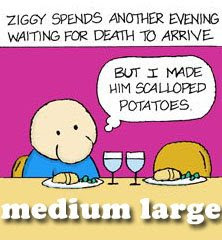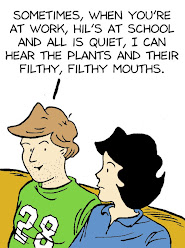
Over the past few years I've had a nice little run as a Script Supervisor for various films, running the gamut from the definitively "indie" to major motion pictures. But truth be told, I perhaps learned the most about filmmaking from the scrappy little productions that made the most of what they had, sometimes making a final product that no one could ever have predicted from the dailies. Today, as we begin our way through what has become "Oscar Bait Season," I would like to share those lessons with you in the hopes that if you ever find yourself behind the camera, in front of the camera or actually serving as the camera on a particularly micro-budgeted production they will prevent you from making a movie even your mom would critically drub.
How to Tell if You Just Blew Good Money to See a Bad Independent Film
• The director plays five major roles and operates the boom mic.
• The film can best be described as “gritty realism” if only because you get to watch every single character take a piss.
• The narration begins, “Mateo was ripe for adventure…”
• The entire original score is hummed.
• The movie proudly states it was “Inspired by the director’s college thesis on Ayn Rand.”
• One of the characters regularly smokes clove cigarettes, and it’s not played for laughs.
• The film opens with an extreme close-up of a fly resting on a woman’s cheek…and stays on that shot for a full ten minutes.
• The movie single-handedly spawns a new motion picture genre—“ninja ennui.”
• A character uses the word “jejune” when speaking of their dog.
• It’s billed as a romantic sex comedy but the only one getting any action is the robot.
• The film is about a group of unmotivated, unattached twentysomething slackers who spend their days bemoaning their fates in iambic pentameter.
• In the credits the producers thank numerous militias.
• The white girl with the dreadlocks is taken seriously.
• The story is told from the perspective of a frustrated writer, a disgruntled teen or a loquacious mime.
• The cast spends the entire 100 minutes sitting on a ratty couch in a Village studio apartment getting stoned, staring into space and engaging in deep, philosophical discussions about the musical direction of their band “Paper or Plastic.”
• The lesbians never make out.
• The indigent farm family all wear “Lucky Brand” overalls.
• The movie takes place completely in the kitchen, much to the obvious dismay of the director’s mother.
• The camera cuts to developing storm clouds whenever there is tension, to a sunny meadow whenever there is joy and to the contents of an unflushed toilet whenever possible.
• The film opens in a freshman philosophy class.
• The dream sequence takes up 90% of the film.
• The title song finds a rhyme for “Siddharta.”
• The movie addresses third world famine and pestilence, by way of a cardiologist’s family in New Rochelle.
• Sexual politics is explored in a retirement community.
• The only character that doesn’t commit suicide is the wise cockatoo.







2 comments:
These are all very funny. My biggest pet peeve with amateur films (real ones) is the use of so-called dramatic camera angles or cinematographic gimmicks for no apparent reason other than to be "artistic." A simple, low-key conversation needn't be filmed as if looking down from a loft ceiling. A character needn't be shown reflected in a dark mirror unless it's a "demonic summoning" or exorcism scene. And please, please never show a character, at length, distorted through a convex spoon surface.
I worked on a film in college (I was a film student, this was a student film, I took what I could get) that had a sex scene that, I believe was only there to make the film "artsy" and "real". Also, so the director could watch people having fake sex.
Post a Comment